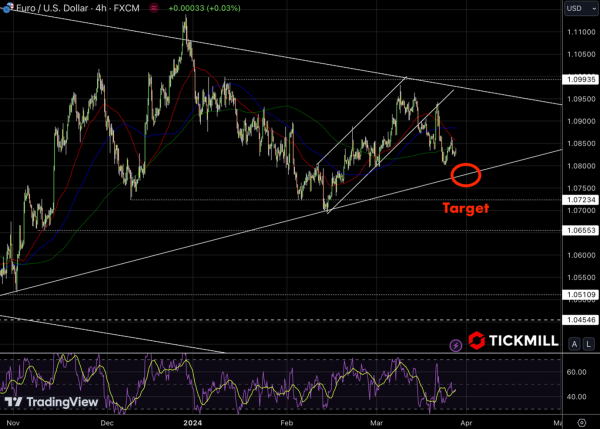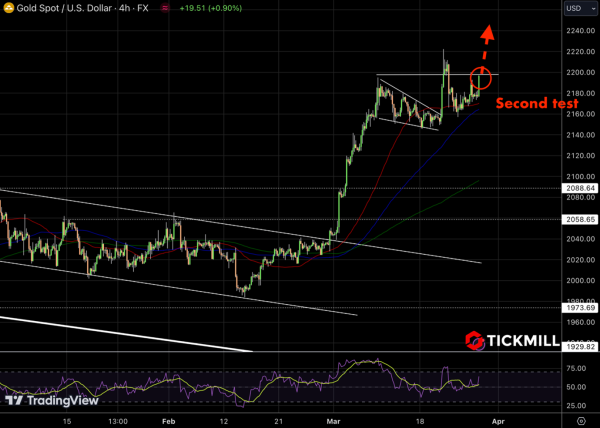EUR/USD Dips as Diverging Central Bank Policies Drive Market Sentiment
In the ever-volatile currency markets, the EUR/USD pair demonstrated a downward trajectory on Wednesday, eventually stabilizing in a narrow band between 1.082 and 1.084. Despite Spanish inflation data for March meeting economists' expectations at 3.2% for the headline reading, the pair struggles to meaningfully extend its upside. In this scenario, Tuesday's bearish reversal can be interpreted as a mere technical retreat from the psychological barrier of the 1.08 level, which swiftly lost momentum, reinstating the pair’s downward trajectory:

EURUSD’s bearish trend underscores the contrasting stances of two major central banks: the US Federal Reserve and the European Central Bank, shaping investor sentiment and currency flows.
The recent discourse among ECB officials suggests a growing likelihood of interest rate cuts in June. ECB Governing Council members, including Madis Muller and Fabio Panetta, hinted at an impending shift in monetary policy, emphasizing the emergence of a consensus favoring rate reductions. Moreover, ECB Chief Economist Philip Lane underscored that wage inflation is steadily converging towards normal levels, signaling a significant step toward removing the primary obstacle to ECB interest rate cuts in the near future.
Conversely, the Federal Reserve's stance appears more divided. While Chairman Jerome Powell advocates for a June rate cut, dissenting voices within the Fed, such as Raphael Bostic and Lisa Cook, advocate for a cautious approach, emphasizing the need for sustainable inflation returns. The variance in viewpoints within the Federal Reserve underscores a heightened level of uncertainty regarding both the pace and magnitude of future interest rate adjustments, surpassing the level of uncertainty observed within the ECB's discussions.
Looking ahead, market participants eagerly anticipate Friday's release of the Core Personal Consumption Expenditures Price Index, considered the Fed's preferred gauge of inflation. The result of this event is positioned to significantly impact the Fed's decision-making process regarding interest rates, as it will complement CPI data by offering a comprehensive view of inflation from the perspective of the demand side (compared to the supply side, as in the case with CPI).
In parallel, the gold market remains in a consolidative phase below the $2,200 mark as traders await further clarity on the Fed's policy trajectory. The upcoming PCE release on Friday is expected to provide meaningful insights into USD demand dynamics, thereby impacting gold prices. Moreover, upbeat US economic indicators, such as Tuesday's Durable Goods Orders, coupled with persistent inflationary pressures, may prolong the Fed's stance on maintaining higher interest rates, bolstering US Treasury bond yields and the USD.
Short-term price analysis in Gold reveals an initial failure to sustain a breakout above the $2200 level on March 21. Nevertheless, the price swiftly regained its upward momentum, positioning itself for a second attempt at testing this critical level. This resilience suggests robust demand near the all-time high, heightening the likelihood of a new record being established in the near future. A potential bullish target could reside in the mid-$2250 range, reflecting the market's underlying strength and upward trajectory:
